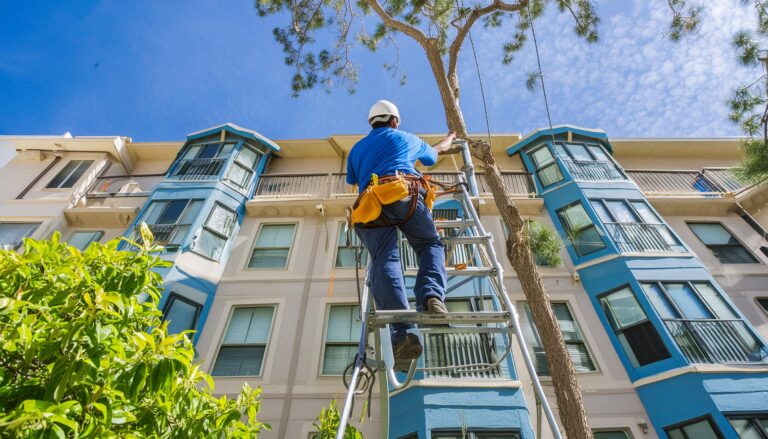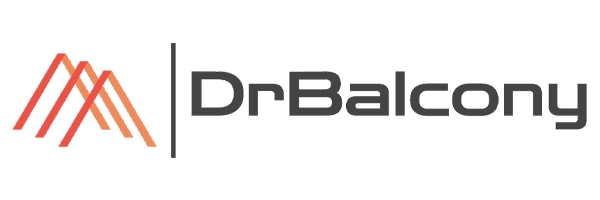How Frequently Are EEE Inspections Required Under California Law?

Table of Contents
Which California Laws Govern EEE Inspections?
How Often Are EEE Inspections Required for Apartment Buildings (SB 721)?
Why Is Regular Inspection Frequency Essential for Safety and Compliance?
Are There Benefits to Completing EEE Inspections Beyond Compliance?
FAQ Section: Top Questions & Answers
In California, Exterior Elevated Elements (EEE) inspections are critical for the safety and structural integrity of buildings with balconies, decks, walkways, and stairways that extend from the structure and support live loads. EEE inspections became mandatory under laws like SB 721 and SB 326 to help prevent structural failures, ensure tenant safety, and maintain property values. This guide explores the frequency and requirements for EEE inspections under California law and answers common questions for property owners and managers.
What Are Exterior Elevated Elements (EEEs), and Why Are They Important?
Exterior Elevated Elements refer to structures such as balconies, decks, exterior walkways, and stairways that extend from a building and bear weight. These elements are especially susceptible to wear and deterioration because they are constantly exposed to weather, water, and temperature changes. Regular EEE inspections help identify issues like water damage, rot, rust, or structural fatigue, which, if left unaddressed, could lead to dangerous conditions. California law now requires these inspections to protect tenants and avoid incidents caused by structural failures.
Which California Laws Govern EEE Inspections?
California has two main laws governing EEE inspections: SB 721 and SB 326. Both laws mandate periodic inspections for specific types of properties, but they differ in their applicability:
- SB 721 applies to multi-family rental properties (apartment buildings).
- SB 326 applies to condominium associations.
While the inspection requirements and timelines differ slightly, both laws aim to ensure the structural safety of EEEs and mitigate the risk of accidents caused by structural issues.
Contact DrBalcony for a professional inspection!
Ensure the safety of your balcony and living space with DrBalcony – We’re a Tech Engineering firm that specializes in San Francisco Section 604 inspections. Over 300+ completed projects in California.
Request A Free EstimateClick To Call
How Often Are EEE Inspections Required for Apartment Buildings (SB 721)?
Under SB 721, apartment buildings in California with three or more units are required to have their EEEs inspected every six years. The first inspection should have been completed by January 1, 2025, so if you own or manage a multi-family property, it’s essential to plan your inspections accordingly.
During an SB 721 inspection, a qualified professional—typically a licensed architect, structural engineer —will assess the condition of the property’s balconies, decks, stairways, and other EEEs. Any identified issues must be repaired within 180 days, or sooner if the inspector deems the problem to pose an immediate threat to safety.
How Often Are EEE Inspections Required for Condominiums (SB 326)?
For condominium associations, SB 326 requires that EEEs be inspected every nine years. However, the initial inspection deadline depends on the date of construction or the most recent EEE construction or reconstruction. This nine-year frequency provides condo associations with adequate time to plan and budget for these inspections.
In an SB 326 inspection, the inspector will look for signs of deterioration, damage, or hazards in all exterior elevated elements. Condo associations should consult with qualified professionals for these inspections and work closely with inspectors to address any identified concerns
What Are the Costs Involved in EEE Inspections?
The cost of an EEE inspection in California varies depending on factors like property size, number of EEEs, and the extent of repairs required. For both SB 721 and SB 326 inspections, property owners should expect an investment in professional fees for the inspection itself, as well as potential costs for any necessary repairs. While costs may seem significant, maintaining compliance with EEE inspection laws helps protect property owners from liability, preserve the building’s value, and ensure resident safety.
For condo associations, these inspection costs are often spread across the homeowners, while apartment building owners typically budget for them as part of routine maintenance expenses. The costs associated with EEE inspections can save property owners considerable expense and liability in the long run by catching and addressing issues before they become serious.
Why Is Regular Inspection Frequency Essential for Safety and Compliance?
Routine EEE inspections under SB 721 and SB 326 are critical not just for legal compliance but for preventing accidents and costly structural damage. In California, the risks of EEE deterioration are amplified by environmental factors like rain, humidity, and coastal salt air, which can lead to rot, rust, and weakening of materials. By following the mandated inspection schedules, property owners can ensure that issues are identified and fixed before they escalate, reducing the risk of structural failures and improving the long-term value of the property.
How Can Property Owners Prepare for Their EEE Inspections?
Preparing for an EEE inspection is straightforward but essential to ensure a smooth process. Here are a few steps property owners and condo associations can take:
- Review the Inspection Schedule: Confirm when your building’s next inspection is due under SB 721 or SB 326 to avoid missing deadlines.
- Choose a Qualified Inspector: Hire a certified architect, engineer with experience in EEE inspections to ensure the work meets regulatory standards.
- Conduct Preliminary Maintenance: Address any visible issues, such as cleaning drainage points or fixing minor damages, to streamline the inspection process and potentially lower repair costs.
- Prepare Residents: Inform tenants or condo residents about the inspection process and schedule, as inspectors may need access to individual units or balconies.
Following these steps can help property owners meet the legal requirements, avoid penalties, and protect their properties from damage.
What Happens If a Building Fails an EEE Inspection?
If an EEE inspection identifies issues that need repair, property owners are required to address these problems within a certain timeframe:
- Under SB 721, apartment buildings must complete repairs within 180 days of receiving the inspection report. Urgent repairs may need to be completed sooner if they pose an immediate safety risk.
- Under SB 326, condo associations must address necessary repairs but have some flexibility in timing, depending on the nature of the repairs and the homeowners’ association’s budgeting.
Failure to comply with these laws could lead to penalties, liability issues, and increased risk to tenant safety, so timely repairs are essential.
Are There Benefits to Completing EEE Inspections Beyond Compliance?
Yes, in addition to staying compliant with California laws, regular EEE inspections offer several other benefits:
- Enhanced Safety: Routine inspections ensure that balconies, decks, and stairways are safe for residents, reducing the risk of accidents.
- Increased Property Value: Well-maintained structures improve the property’s curb appeal and can contribute to higher property values.
- Tenant Satisfaction: A proactive approach to maintenance and safety builds trust with tenants and owners, showing that their safety is a priority.
For these reasons, EEE inspections should be viewed not just as a regulatory obligation but as an investment in property quality and tenant satisfaction
Contact DrBalcony for a professional inspection!
Ensure the safety of your balcony and living space with DrBalcony – We’re a Tech Engineering firm that specializes in San Francisco Section 604 inspections inspections. Over 300+ completed projects in California.
Request A Free EstimateClick To Call
FAQ Section: Top Questions & Answers
What is a Section 604 inspection in San Francisco?
A Section 604 inspection is a mandatory safety evaluation for exterior elements of multifamily residential buildings in San Francisco. These inspections assess items like decks, balconies, stairways, and other elevated structures for safety and compliance with the city’s building codes.
Why is the Section 604 inspection required in San Francisco?
San Francisco’s Building Code mandates Section 604 inspections to ensure the safety and structural integrity of exterior elevated elements in older multifamily buildings. This requirement helps prevent accidents and promotes building safety for residents.
How often must a Section 604 inspection be conducted in San Francisco?
In San Francisco, property owners are required to complete a Section 604 inspection every five years. This recurring inspection ensures that any potential issues with exterior structures are identified and addressed promptly.
Who can perform a Section 604 inspection in San Francisco?
Section 604 inspections must be conducted by a licensed structural engineer, architect, or qualified inspector familiar with the requirements of the San Francisco Building Code. Hiring a professional ensures a thorough and compliant inspection.
What happens if my building fails the Section 604 inspection in San Francisco?
If a Section 604 inspection reveals safety concerns, the property owner must address these issues to meet compliance standards. Necessary repairs must be completed and re-inspected to confirm safety before receiving final approval.
